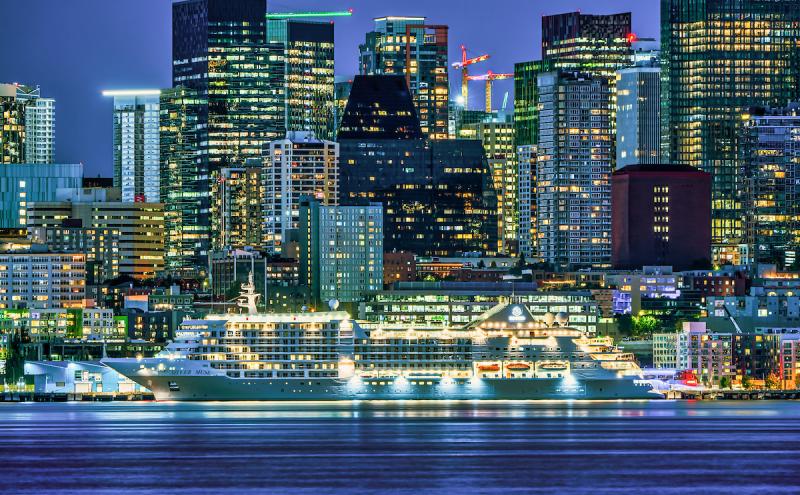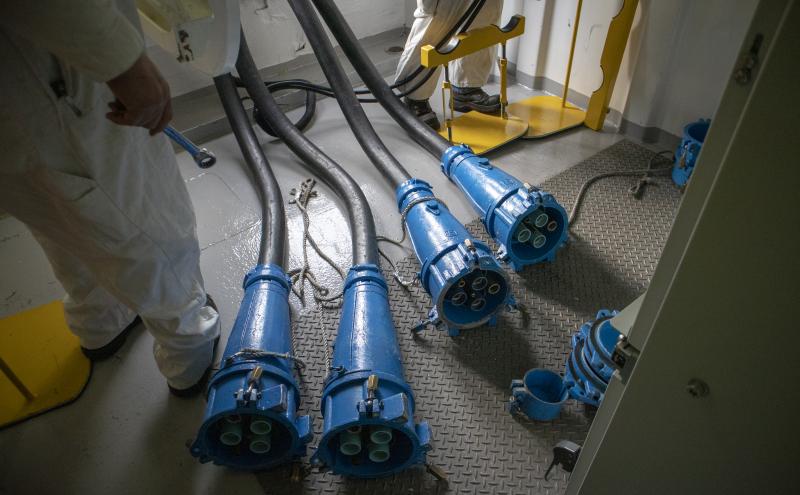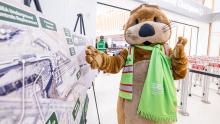
This weekend we will host our last passenger cruise vessel of the 2021 cruise season, concluding a season that safely hosted 82 cruise ship calls and approximately 229,000 passengers between July 19 and October 23. Making this cruise season possible took over a year, and involved the commitment of our partners in the cruise business, national and local health agencies, labor, and tourism representatives from Washington state to Alaska. We already are working to welcome cruise back for the 2022 season, but first it’s time to reflect upon the accomplishments this year.
Restoring cruise in Seattle was always fundamental to the Port's economic recovery strategy. We adopted safety and environmental measures to make Seattle not only one of the greenest cruise ports in the world, but one of the safest too.
Keeping everyone safe
Leading up to the 2021 cruise season, the Port and the cruise lines invested significant resources in supporting community health, ensuring robust water quality protections, reducing air emissions, and bringing back well-paying jobs to Seattle’s waterfront. The Port worked with public health, environmental agencies, community groups, and local vendors over the past year and a half to balance COVID-19 safety, implement world class environmental measures, and spur the important economic recovery our region and state desperately need. I’d like to share more details.
Cruise lines worked hard to adapt COVID-related health and safety measures in response to public health guidance and recommendations. All crew members were fully vaccinated before departure. Cruise lines operating in Seattle updated their existing measures to require negative COVID tests within 72 hours of embarkation for all passengers regardless of vaccination status. Norwegian Cruise Line required all passengers to show proof of vaccination and had to test negative for COVID at the terminal before boarding the ship. Cruise line and passenger commitments to these safety measures protected fellow passengers, crew, employees, our community here in Seattle, and along the Alaska itinerary. These overlapping protocols made cruising from Seattle safe for passengers, crew, and community members.
Protecting the environment
The Port of Seattle continued its efforts to be the greenest cruise port in North America by encouraging our cruise partners to continue to embrace our region’s sustainability goals, by supporting the industry’s voluntary sustainability initiatives, and in some cases requiring practices that go above and beyond already stringent environmental regulations to further protect our environment.
In April of this year, the Port adopted a new Northwest Ports Clean Air Strategy vision, to phase out seaport-related emissions by 2050, supporting cleaner air for our local communities and fulfilling our shared responsibility to help limit global temperature rise to 1.5 degrees Celsius. Bringing clean energy to our waterfront is a major component of that strategy. The Port already provides clean shore power to ships at the two cruise berths at Pier 91 and is on track to provide shore power to the Pier 66 cruise terminal in time for the 2023 cruise season. The Port has also set a goal to have 100 percent of cruise ships in Seattle come equipped with shore power capability and connect on every call by 2030 or sooner.
The cruise lines continue to show their support for clean air and climate action by continuing to increase the number of vessels that are shore power capable. This season, 100 percent of Carnival Cruise Line, Holland America Line, and Princess Cruises ships calling at Pier 91were able to connect to shore power and shut down their diesel engines while at berth in Seattle.
Cruise lines are often early adopters of cutting-edge environmental practices, which paves the way for broader acceptance across the maritime industry and by other types of ocean-going vessels. One example of this is that cruise lines calling in Puget Sound voluntarily stopped discharging any effluent from Advance Wastewater Treatments systems, despite the significant investment in those systems. That voluntary action preceded the No Discharge Zone in Puget Sound and demonstrated the feasibility for other vessel types.
Since 2004 the Port has partnered with Washington State Department of Ecology and the cruise industry in a voluntary agreement. The memorandum of understanding, often referred to as the “Cruise MOU.” was the agreement originally put in place to voluntarily increase both standards and oversight on cruise ships, allowing for random inspections of systems and records on ships each season. In 2018, Puget Sound became a ‘No Discharge Zone’ that extends these protections to more than just cruise ships.
Just recently, the Cruise MOU parties considered an amendment to ban exhaust gas cleaning system (EGCS) wash water from cruise ships throughout all of Puget Sound. The Port believes strongly in a precautionary approach to the discharge of EGCS wash water. By working directly with our cruise line customers outside of the Cruise MOU, we are pleased to report that all of the ships calling on Port of Seattle have paused all discharges of EGCS wash water in Puget Sound. This pause will remain in effect until findings from a third-party research institution can show that wash water discharges do not impact Puget Sound water quality.
Safe, strong, and sustainable
The 2021 cruise season represented our commitment to bring cruise back to our community safer, stronger, and more sustainable than ever before. Communities in Alaska rely on tourism income to maintain their livelihoods, as do many businesses in our region. A recent report prepared for the Alaska Travel Industry Association found that the lack of cruise in 2020 contributed to a decline in visitors by $600 million, leading businesses to rely on government assistance, cut jobs, and reduce or pause operations. Closer to home, a typical cruise season brings nearly $900 million in business revenue to the Seattle region and supports over 5,000 jobs. While still far below the economic activity of a normal year, the 2021 season helped businesses take another step away from tense financial times and towards supporting their families in Alaska and Washington.
The Port also understands that we cannot do this alone. To complete an equitable recovery and decarbonize our port, we need continued engagement by industry, governments, communities, and organizations. We appreciate the partnership of all public health agencies, cruise lines, local government leaders, community partners, the tourism industry, allied businesses, and workers who made the 2021 season a success. We look forward to bringing back a stronger, safer, and more sustainable cruise season in 2022.





